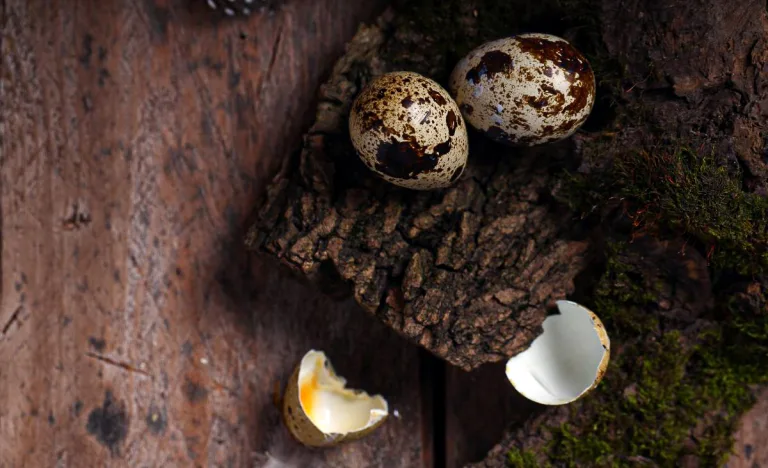Sick Quail Symptoms: How I Spot Trouble Early and What to Do About It
Raising Coturnix quail has been one of the most rewarding things I’ve done on the homestead. They’re tough, quick to mature, and easy to keep happy, but that doesn’t mean they never get sick. Like any animal, they’re still vulnerable to stress, bumps and bruises, and the occasional bug or flare-up. The tricky part is that quail are prey animals, so they hide weakness until things get serious.
After raising thousands of Coturnix and studying animal health and behavior as a zoologist, I’ve learned to spot the early signs most people tend to miss. Here’s exactly how I spot trouble early, what it usually means, and what to do so your covey stays on track.
How I Tell When a Quail Isn’t Feeling Right
Quail are creatures of habit. Once you know their normal, the weird stuff jumps out. Behavior gives it away first.
Behavioral Symptoms
Hanging Back or Hiding Out: If a normally active quail starts sitting in a corner, closing its eyes, or avoiding the group, something’s off. Sick quail often separate themselves or fall behind during feeding.
Loss of Appetite or Thirst: Healthy Coturnix eat and drink throughout the day. If you notice one ignoring the feeder or standing by the waterer without drinking, that’s a red flag for me.
Huddling When They Shouldn’t: When quail fluff up and huddle even when temperatures are fine, they’re trying to conserve heat. This can happen with illness, stress, or poor nutrition.
Odd Noises or No Noise at All: Quail aren’t noisy birds, but they do have routines. Wheezing, clicking, or raspy breathing are warning signs. On the other hand, a hen that suddenly goes quiet might also be struggling.
Physical Signs of Illness in Quail
Once you notice something off in behavior, go hands-on. Pick the bird up and really look it over. Do a quick top-to-tail check. Check keel, eyes, vent, feet. You’ll catch things you’d never spot from across the pen.
Fluffed Feathers That Stay That Way: It’s normal for quail to fluff up briefly when resting or preening. But if they stay puffed up for hours and look tired or hunched, that’s a sick/stressed bird in my book.
Weight Loss or Sharp Keel Bone: Run a finger along the breastbone. It should feel rounded, not sharp. A sharp keel tells me they’re not keeping weight, either not eating well or fighting something.
Eye or Nose Discharge: Clear, bright eyes are a sign of health. If you see bubbles, crust, or swelling around the eyes or nostrils, that often points to respiratory infection.
Abnormal Droppings: Healthy droppings are firm, brown, and capped with a bit of white. Anything watery, green, yellow, or bloody is a warning sign. Watery might be stress or digestive upset, while blood or mucus has me thinking coccidiosis.
If you suspect a diet issue (low protein or a vitamin gap) take a look at what I feed Coturnix (plus the common mistakes to avoid). Proper nutrition prevents many of the health issues that show up later as weak feathers, poor egg quality, or sluggish birds.
Labored Breathing or Wheezing: Open-mouth breathing or a clicking sound when they exhale means they’re struggling to get enough air. Sometimes it’s the setup (dust, ammonia). Sometimes it’s an actual infection.
External Issues: Injuries, Mites, and More
Not every health problem comes from illness. Sometimes what looks like sickness is really an injury, irritation, or an external issue that needs a different kind of attention. Start with the simple checks first.
Limping or Sitting Often: Foot and leg problems are common in wire pens. Check for swelling, sores, or curled toes. Sometimes it’s not an injury at all. Sometimes it’s a vitamin B issue, and a B-complex usually turns it around.
Feather Loss or Constant Scratching: Patchy feathers around the neck, vent, or wings can point to mites or lice. Look for dark specks or irritated skin. If you suspect parasites, see my mite/lice prevention steps here—these are the methods I use on the farm.

Common Illnesses in Coturnix Quail
In all the years I’ve raised quail, the only illness I’ve personally seen in my birds is egg binding, but thanks to my zoology background, I’m familiar with the broader range of conditions that can affect Coturnix. Here’s the short version and what I’d do.
Coccidiosis
Cause: Protozoa spread through droppings and damp bedding
Symptoms: Lethargy, puffed feathers, bloody or watery droppings, huddling, weight loss
Action: Isolate the bird. Start Amprolium in the water immediately, following the package directions for 5–7 days. It’s not an antibiotic; it just slows the parasite down long enough for the bird’s system to bounce back. Clean the pen thoroughly. After the course, I add probiotics to help the gut reset itself.
Prevention Tip: Keep pens dry and clean. Damp litter and spilled feed are prime breeding grounds for coccidia.
Respiratory Infections (Bronchitis, Mycoplasma, etc.)
Most quail respiratory problems come from stuffy air or dusty pens (different from the infectious bronchitis you see in chickens).
Cause: Poor airflow, high dust, or exposure to infected birds
Symptoms: Wheezing, nasal discharge, or open-mouth breathing
Action: Improve ventilation, isolate the bird, and sanitize waterers and feeders. If it spreads or gets worse, talk to a vet about antibiotics.
Prevention Tip: Good ventilation is key, especially for indoor pens.

Ulcerative Enteritis
You probably won’t ever see this in a small setup, but still worth knowing the signs.
Cause: Clostridium bacteria, usually in dirty or overcrowded brooders
Symptoms: Diarrhea, sudden weight loss, or death in young birds
Action: Clean the pen thoroughly and treat with antibiotics like bacitracin or penicillin.
Egg Binding (Hens Only)
This is the one I’ve dealt with firsthand and catching it early makes all the difference.
Cause: Low calcium, cold weather, dehydration, or large eggs
Symptoms: Straining, swollen vent, puffed feathers, and lethargy
Action: Move her to a warm, quiet area and offer calcium and electrolyte water. A warm bath or gentle massage may help. If the egg doesn’t pass within 24 hours, consult a vet or cull humanely.

When It’s Stress, Not Sickness
Quail can act “off” for reasons that have nothing to do with being sick. Here’s how I tell the difference between stress and a real health problem.
| Behavior | Likely Stress Cause | Illness Indicator |
|---|---|---|
| Puffed up briefly after handling | Temporary fear or chill | Stays puffed all day |
| Quiet after pen cleaning | Environmental change | Silent and still for hours |
| Lays fewer eggs in heatwave | Temperature stress | Stops eating and droppings change |
If the behavior clears up within a day, it’s probably not illness.
Troubleshooting Chart: Quick Diagnosis Guide
Not sure what you’re seeing? Use this quick chart to match the symptom with the likely cause.
| Symptom | Likely Cause | What to Do |
|---|---|---|
| Fluffed up + not eating | Coccidiosis or respiratory infection | Isolate, start Amprolium, clean pen |
| Wheezing or gurgling | Poor ventilation or Mycoplasma | Improve airflow, isolate, sanitize |
| Limping or curled toes | Injury or vitamin deficiency | Add B-complex, use soft bedding |
| Bloody droppings | Coccidiosis | Treat with Amprolium |
| Sudden death in young birds | Ulcerative Enteritis | Disinfect brooder, start antibiotics |
What to Do When You Spot Sick Quail Symptoms
Once something feels off, don’t wait and see. Move fast but stay calm. I keep a small ‘sick kit’ on hand so I’m not scrambling. Here’s what I do the minute one of mine starts acting off.
- Isolate the Bird. Move it to a small, clean pen or brooder.
- Keep It Warm. Sick birds can’t regulate temperature well.
- Offer Electrolytes and Protein. I use mealworms, scrambled egg, or electrolyte water.
- Clean and Sanitize. Disinfect feeders, waterers, and bedding.
- Watch the Rest of the Covey. If more than one bird shows it, assume it can spread.
- Cull if Necessary. If the bird declines fast, humane culling may be the kindest choice.
Seasonal Health Considerations
Every season throws something different at your quail, and learning to anticipate those changes makes life a lot easier.
Winter: Drafts and moisture often lead to respiratory flare-ups. If you’re raising quail through a Maine winter, you’ll find more Maine-tested tips in my four-season guide.
Spring: Damp litter and fresh soil exposure make coccidiosis more common. Keep brooders dry and change bedding often.
Summer: Heat stress and dehydration sneak up fast. Make sure shaded areas and fresh water are always available.
Fall: Molting season can look like illness. Expect lower activity and feather loss but steady appetite and healthy droppings.
Preventing Illness in Your Covey
Keeping your birds healthy really just comes down to a few steady habits. Stick with them and you’ll head off most problems before they start.
- Keep Pens Clean and Dry. Spot clean daily and deep clean weekly.
- Provide Fresh Water. Always offer plain water alongside any supplements.
- Feed a Balanced 17–20% Protein Diet. Strong nutrition builds resistance.
- Quarantine New Birds. At least two weeks.
- Reduce Stress. Avoid overcrowding (2–3 birds per square foot) and keep lighting steady.
If you want to dig deeper into prevention (or when to call a vet), here’s my fuller guide to common quail diseases.
Frequently Asked Questions
These are the questions I hear most often when someone’s worried about a sick quail and what I tell them before they start grabbing meds.
That usually means illness. Most often coccidiosis, respiratory infection, or low temperature. Isolate and observe closely.
Yes, especially if treated early with Amprolium and probiotics afterward.
For contagious issues like coccidiosis or parasites, yes. For individual injuries, just isolate and monitor the others.
No. Discard any eggs laid during illness or antibiotic treatment.
Most often Enteritis, coccidiosis, or heat stress. Check droppings, temperature, and hydration first.
Healthy birds breathe quietly. Clicking, tail bobbing, or open-mouth breathing signal distress.

Catching sick quail symptoms early is the best thing you can do for your birds. Once you know what’s normal for your covey, even small changes stand out.
Stay observant, keep conditions clean, and trust your gut. If something feels off, it probably is. With a little attention and care, you’ll keep your birds healthy and laying strong. The more time you spend with your quail, the easier it becomes to spot patterns and notice the outliers. The quiet bird, the messy droppings, the one that skips the feeder. Those little tells add up. Over time, you’ll develop an instinct for your birds’ rhythm and know exactly when to step in and when to let them be.
You’ve got this.







